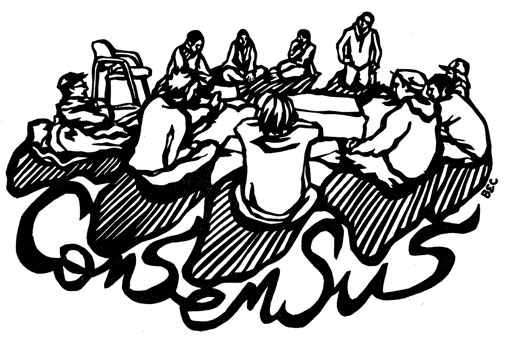It is nearing the end of the quarter, and although this week is filled with wrap up work such as revising my paper, creating my final presentation, and writing my self evaluation, as I was looking through my blog posts to make my PowerPoint I realized that after these nine weeks in search of solutions to address food insecurity on campus, I should focus my final blog post on these findings.
The following is an excerpt taken directly from my paper, which I linked to last week’s ILC Update, but visually jazzed up for WordPress purposes.
After a quarter-long investigation of the prevalence of food insecurity on campus and efforts being taken to combat it both at Evergreen, and at a national level, I propose a series of recommended actions be taken by Evergreen to improve food security on campus:
The first recommendation is a relatively simple one –expand the Human Services Working Group to include representatives from Residential and Dining Services, Aramark, The Eggplant, the GSU, First Peoples Multicultural Advising Services, and administration. It is clear that all aforementioned parties are interested in this issue, and consolidated communication from all relevant entities in one place with a collective purpose is the most effective way to plan comprehensively and pool both efforts and resources to address food insecurity.
As it currently stands, The Evergreen State College employs students to work a maximum of 19 hours a week. Extending this maximum allotment to 20 hours a week would allows student employees in need to qualify for SNAP benefits without acquiring an additional job outside of their Evergreen employment to meet the 20 weekly hours required by the USDA to qualify for assistance (USDA ERS, n.d.). Although there are a few cost-related and legal barriers, such as the requirement of providing healthcare benefits, this one-hour shift would make worlds of difference for students employed by the college.
By Designed by Iconathlon as a collaboration with Edward Boatman. (The Noun Project) [CC0], via Wikimedia Commons
Although this suggestion may take a lot of legwork and fundraising, developing a food scholarship that specifically covers meal plans for hungry or food insecure students would be a direct way to guarantee that at least a select amount of students who couldn’t feed themselves otherwise will be nourished throughout their time at Evergreen.
Efforts towards a more fair, humane, ecologically sound, and community-based food system on campus using a third-party organization has already proved successful with the recent implementation of the Real Food Challenge, however adopting additional practices or organizations to balance these efforts with making sure that food remains affordable for all Evergreen students is incredibly important. With that being said, my final recommendation would be to pursue creating a Swipe Out Hunger chapter here on the Evergreen campus. Although Katherine Striggow, Evergreen’s Aramark Director, has voiced her reservations when previously presented with this idea, I believe with the proper amount of student support and dedication, this program could be implemented relatively smoothly (Striggow, personal communication, March 1, 2017).”
That’s all for now. You can see my Winter ILC Final Presentation on my Week 10 ILC Update Post.





Leave a Reply